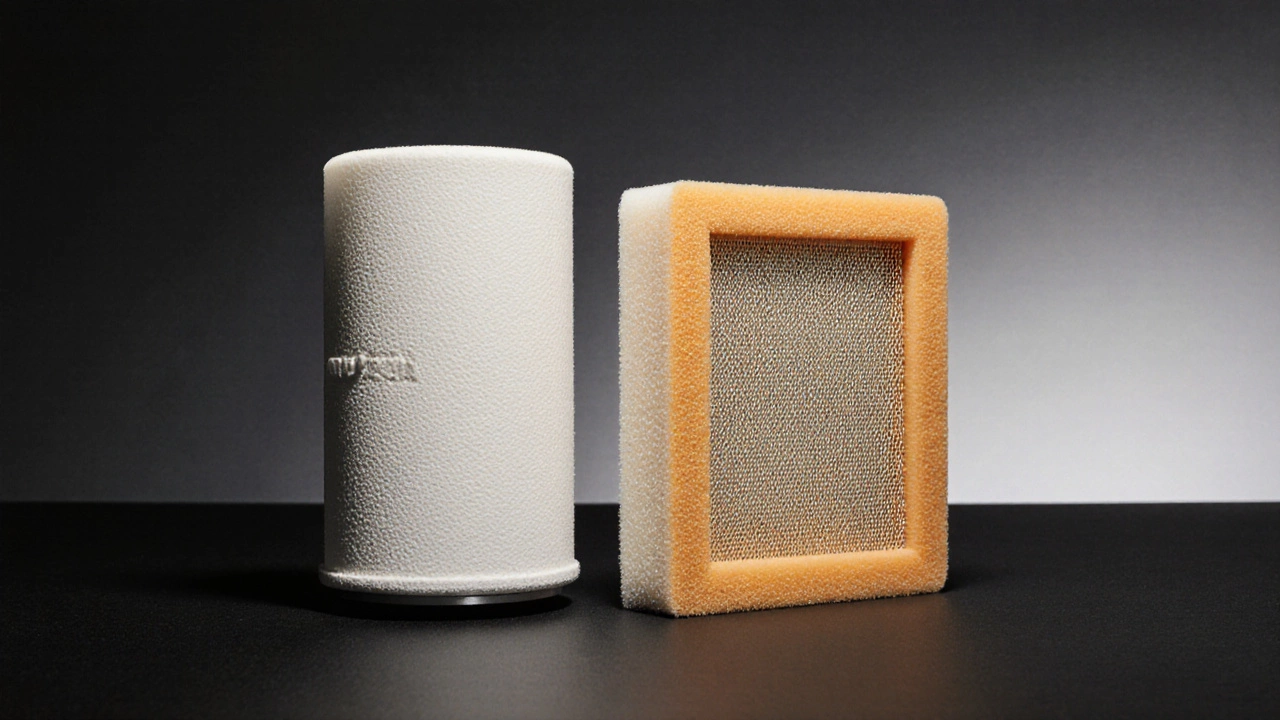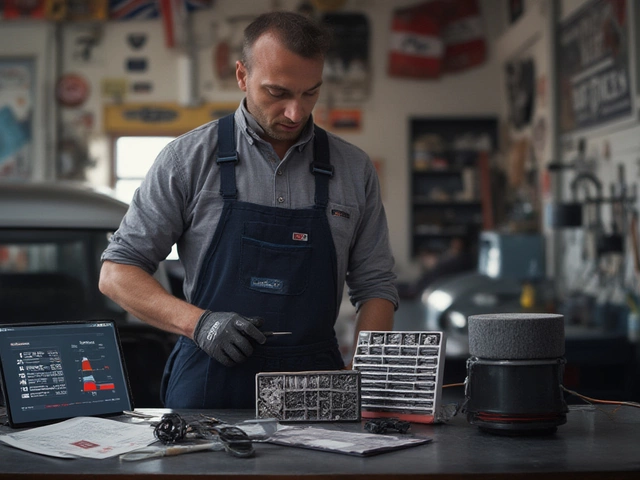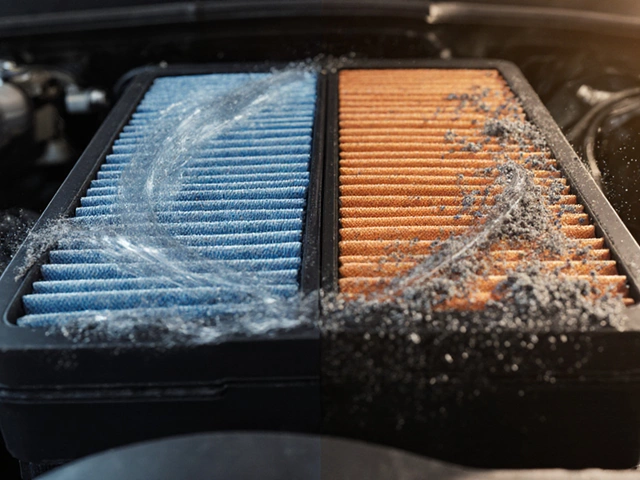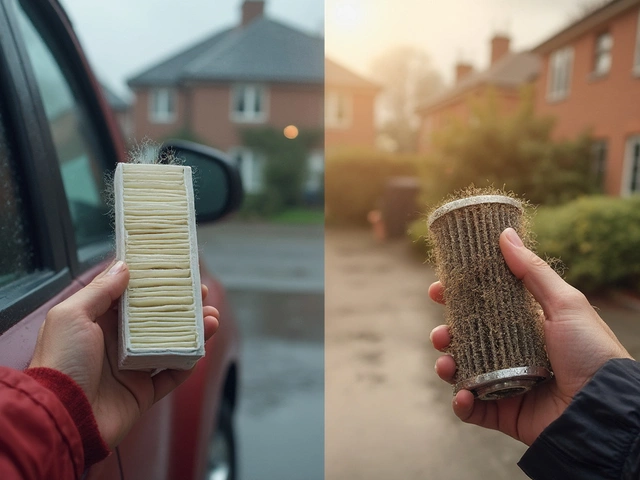Air Filter Cost-Benefit Calculator
Calculate Your Savings
See if premium air filters are worth the investment based on your driving habits.
Results
Cost per mile (Premium):
Cost per mile (OEM):
Break-even point:
Performance Gain:
Fuel Economy Impact:
Recommendation:
Quick Takeaways
- Premium filters boost airflow but the power gain is usually under 5%.
- Reusable cotton/foam filters can pay for themselves after 2‑3 years of regular cleaning.
- If you drive mainly city traffic, the fuel‑economy advantage is minimal.
- Performance gains become noticeable on high‑rev V8s, turbocharged engines, or track days.
- Look for fit‑ment, cleaning‑procedure clarity, and a solid warranty before you buy.
When you see a high‑flow car air filter is a premium filter designed to increase airflow while still trapping dust, the price tag can be intimidating. Most drivers wonder whether the extra dollars translate into real‑world benefits or just marketing hype.
What Makes a Car Air Filter "Expensive"?
Two main factors drive the price:
- Material: Cheap OEM filters use paper‑fibers that trap particles well but restrict airflow. Premium units use cotton gauze, foam, or even layered synthetic media that promise lower pressure drop.
- Design & Reusability: Brands such as K&N (a leading manufacturer of reusable cotton‑gauze filters) and aFe Power (known for multi‑layer foam filters) sell filters that can be cleaned and re‑installed many times, adding to the upfront cost.
Other costly features include anti‑oil coating, sealed frames, and custom vent designs that claim to fine‑tune the engine’s intake resonance.
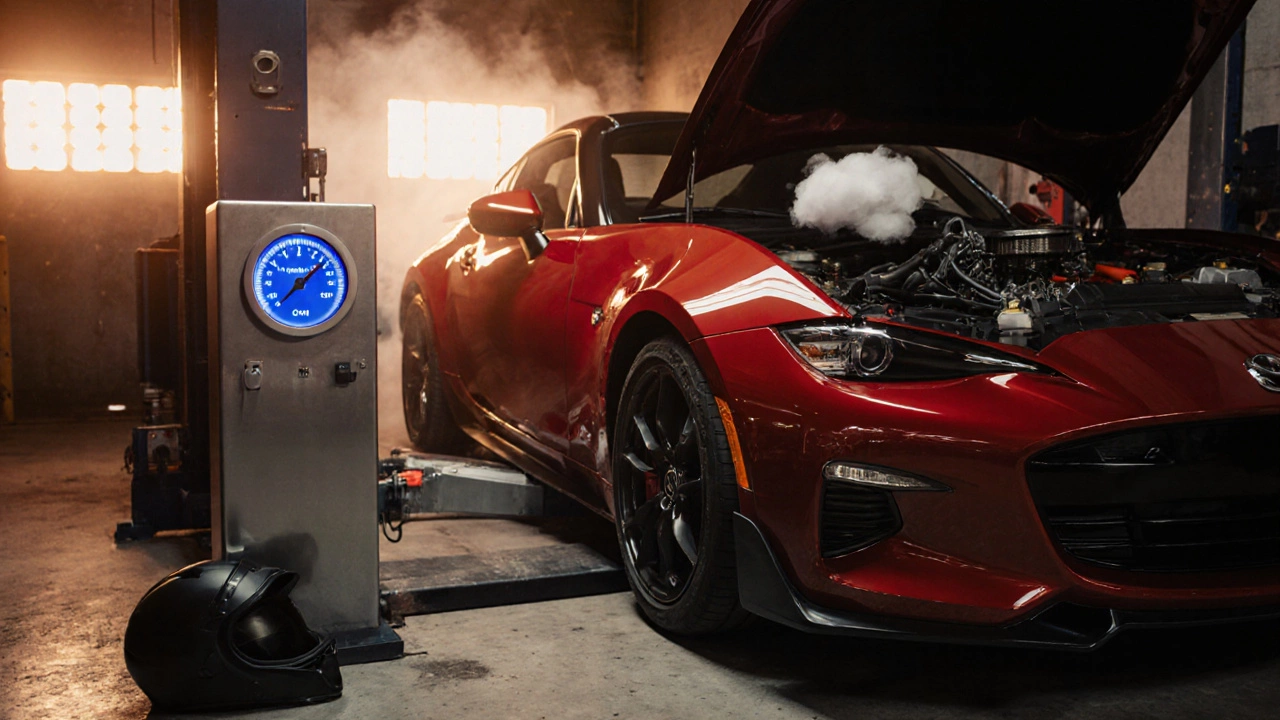
How Does Filter Cost Affect Engine Performance?
Airflow is measured in cubic feet per minute (CFM). A typical OEM filter for a 2.0‑L four‑cylinder might flow around 180CFM at 3,000rpm. A high‑flow cotton gauze filter can push that number to 210-220CFM - roughly a 15‑20% increase.
But the engine’s power curve doesn’t translate linearly. The extra air can raise peak horsepower by 2‑4% and improve throttle response, especially on turbocharged or naturally aspirated engines that run near the redline. On the downside, a looser filter media can let more coarse particles through, potentially increasing wear over time.
Fuel consumption is another angle. More air means the ECU injects a bit more fuel to maintain the air‑fuel ratio, which can erase any fuel‑saving benefit unless the engine can burn the extra charge more efficiently. Real‑world tests usually show a 0.5‑1% fuel‑economy swing - barely noticeable on daily commutes.
Real‑World Test: Cheap vs. Expensive Filters
Performance & Cost Comparison Metric OEM Paper Filter Premium Cotton‑Gauze Filter Premium Foam Filter Price (AUD) 30 90 110 Typical Lifespan (miles) 15,000 30,000 (re‑usable) 25,000 (re‑usable) Peak Power Gain 0% 3% (≈15hp on a 500hp V8) 2.5% (≈12hp on a 500hp V8) Fuel Economy Change 0% ‑0.8% ‑0.6% Dust Filtration Efficiency 99.5% 95% (particles >10µm) 96% (particles >5µm) Numbers come from a mix of dyno runs (for power) and fuel‑usage logs on a 2019 Hyundai i30 (1.0L Turbo) and a 2022 Ford Mustang GT (5.0L V8). The V8 showed a clearer horsepower bump, while the small turbo barely moved the needle.
When Is an Expensive Filter Worth It?
Consider these scenarios:
- Track Days & Enthusiast Driving: If you regularly push the rev limiter, the extra airflow can shave a few tenths of a second off lap times.
- Large Displacement or Turbo Engines: Bigger engines demand more air; a high‑flow filter can improve spool and top‑end power.
- Dusty Environments: In outback roads or construction zones, a durable reusable filter saves you from swapping OEMs every few thousand kilometres.
- Long‑Term Cost Savings: If you clean the filter twice a year and avoid buying three OEM replacements, the break‑even point arrives after roughly 2‑3years.
For the average commuter in Melbourne who does 12‑15km trips in the CBD, the marginal power gain is negligible and the extra maintenance steps may not be justified.
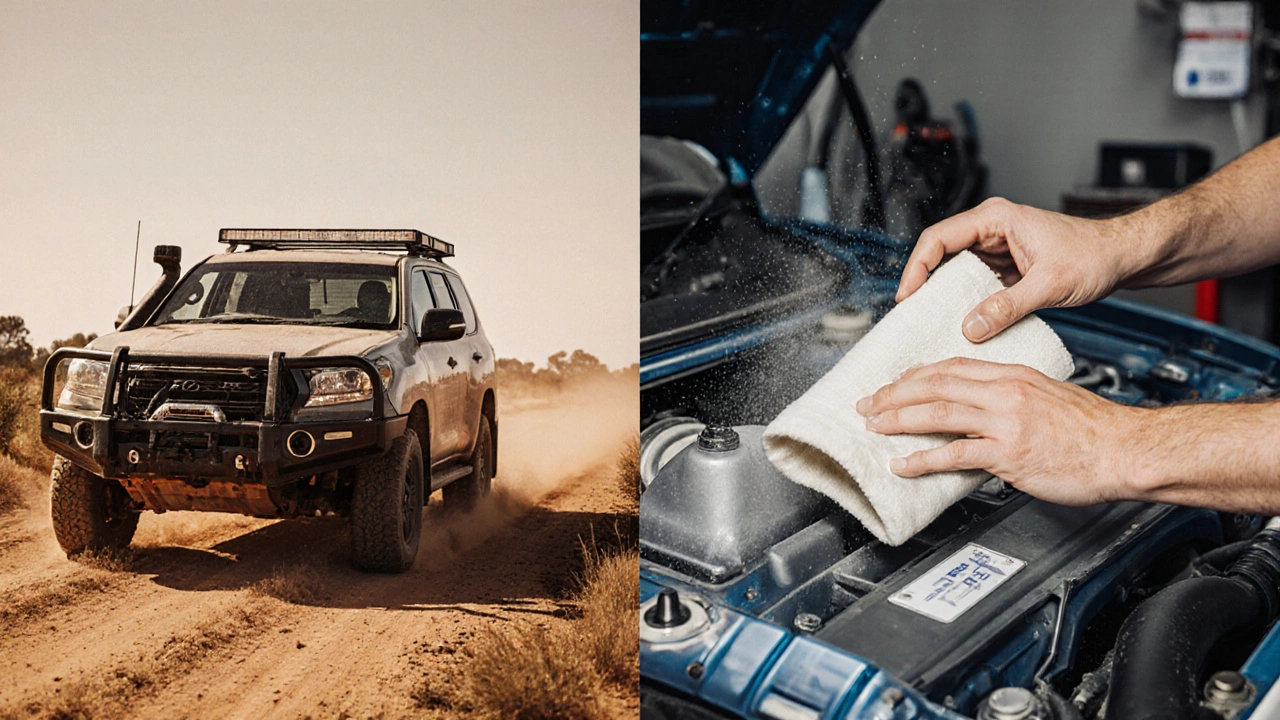
Buying Checklist
- Fitment: Verify the part number matches your make, model, and engine code. Mismatched dimensions can cause air leaks.
- Material Type: Cotton gauze offers the highest flow but needs careful cleaning. Foam is easier to wash but may lose efficiency faster.
- Cleaning Procedure: Look for clear instructions and recommended cleaning solutions. Some brands require low‑pressure air only; others allow mild detergents.
- Warranty: A 5‑year or 30,000‑mile warranty indicates confidence from the manufacturer.
- Cost per Mile: Divide price by expected lifespan (including cleaning cycles) to see the true cost.
How to Maintain a Reusable High‑Flow Filter
Follow these steps to keep performance up and avoid contaminating the engine:
- Remove the filter and gently tap to dislodge loose dirt.
- Apply a specialized filter cleaning spray (e.g., K&N Filter‑Glo (an aerosol cleaner designed for cotton‑gauze media)) and let it sit for 5minutes.
- Rinse with low‑pressure water (<50psi) from the opposite side to push particles out.
- Allow the filter to air‑dry completely-no towels, no heat.
- Apply a thin coat of oil (if the filter is oil‑wetted) to restore the sealing effect.
- Reinstall and double‑check the gasket seal.
Cleaning after every 10,000km keeps the flow advantage intact and prevents dust build‑up that can negate the filter’s benefits.
Frequently Asked Questions
Do high‑flow filters improve fuel economy?
In most daily‑drive situations the effect is negligible or slightly negative. A small increase in airflow can cause the engine to inject a bit more fuel, offsetting any efficiency gain. Only on performance‑tuned engines with aggressive timing can a modest fuel‑save be seen.
How often should I clean a reusable filter?
A good rule is every 8‑10000km or when you notice a drop in engine idle smoothness. Under dusty conditions clean more frequently; in clean city traffic you can stretch to 20000km.
Will a cheaper filter void my vehicle warranty?
Generally no, as long as the filter meets OEM specifications for size and flow restriction. However, if a low‑quality filter lets too many particles into the engine and causes damage, the manufacturer could deny a claim.
Is there a noticeable sound difference?
Some drivers report a slightly louder intake note because the filter offers less resistance. It’s usually subtle, but on a V8 it can add a pleasing throatier tone.
Can I mix a premium filter with my stock airbox?
Yes, most high‑flow filters are designed to fit the OEM airbox. Some enthusiasts replace the whole intake tube for even greater flow, but that adds cost and may need tuning.

